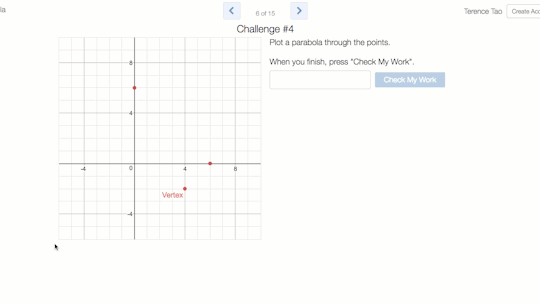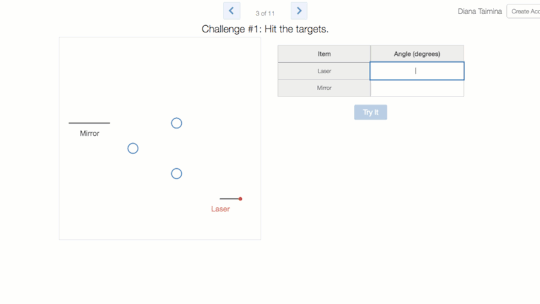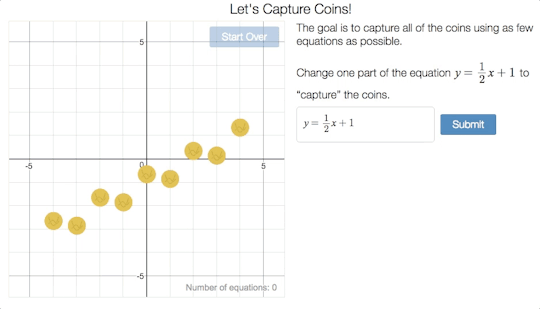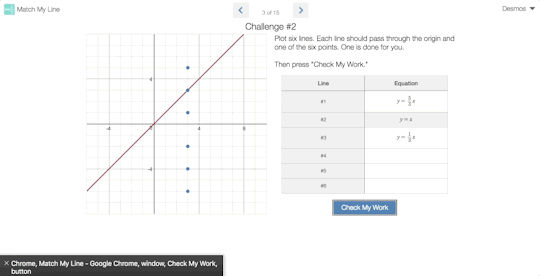Friday Fave for November 16
Feedback comes in many forms. We can give feedback by evaluating
a response as correct or incorrect in order to report a score. Alternatively,
we can reflect back what we hear from another person, support them in
considering if that is what they really mean, and allow them to make revisions
until what they are trying to communicate is consistent with how it is being
received.
In Land the Plane, students see that their slope is incorrect if the plane doesn’t land on the runway. They can refine their thinking in an effort to be successful - and to learn how to compute the slope of a line.

In Match my Parabola, Students see the parabola that corresponds to an equation they submit. Students are empowered to use this feedback to modify their equation, and move on when they are satisfied, resulting in increased student learning and motivation.

In Laser Challenge, students see the angles they selected cause a laser and mirror to animate to get feedback on the accuracy of their predictions. Through revisions, students develop their intuition for angle measures and properties of reflections.

Being told an answer hinders motivation and discourages revision. It implies that someone else already knows the answer and that your thinking is insufficient.
Being shown what you’re saying without judgment supports thinking more deeply. It can make the goal feel attainable which encourages learning through revision. That’s why interpretive feedback is this week’s Friday Fave.



